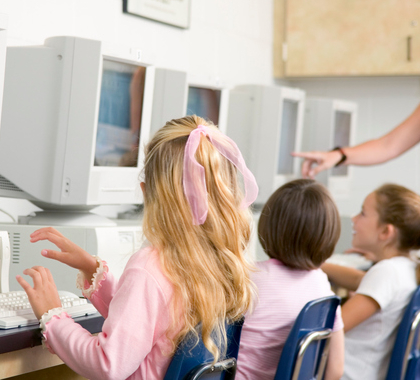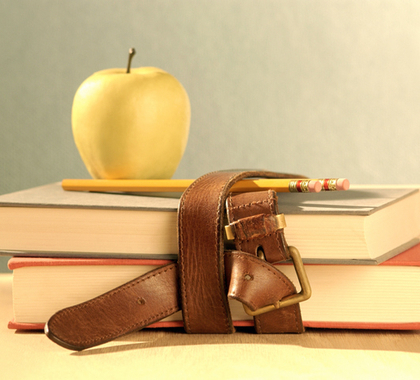Wisconsin’s charter schools and private schools in the state’s choice program are outperforming traditional public schools on measures of student proficiency, a new study reports.
Will Flanders, research director of the Wisconsin Institute for Law & Liberty (WILL), conducted a sophisticated statistical analysis to compare how Wisconsin schools would perform if every school had a similar student body. Flanders examined English language arts (ELA) and mathematics test data from Wisconsin’s Forward Exam, given to students in the third through eighth grades, and scores on the ACT college entrance exam, in public, charter, and private choice schools.
Flanders found many of the best schools in Wisconsin are private and charter schools. Five of the top 20 schools in the state are private voucher schools, and four of the top 20 are charters. Flanders found that of the 20 schools with the greatest improvement in Hispanic student test proficiency—that is, the annual ‘value added’ measured by test scores—in the state are choice or charter schools.
The findings are reported in Apples to Apples 2019, published by WILL on June 6.
Charter and choice schools perform better than district public schools in Milwaukee, states the report. For example, charter schools that have some independence from school districts, which are called non-instrumentality charters, have student proficiency rates exceeding those in traditional Milwaukee public schools (MPS) by 13.0 percent in math and 12.1 percent in English language arts, on average.
Choice Schools’ High Achievement
For independent charters, which aren’t supervised by a public-school district, proficiency in math exceeds that of MPS schools by 8.2 percent. Milwaukee’s Parental Choice Program also has proficiency rates above those in MPS, by 3.9 percent in math and 4.6 percent in English, on average.
Annual improvements in student test proficiency in choice, non-instrumentality charters, and independent charters are all higher than in MPS, Flanders found.
Wisconsin’s parental choice programs outside of Milwaukee (Racine and statewide) are also doing better academically than traditional public schools. Proficiency exceeds traditional public schools by 3.05 percent in the Racine and statewide voucher programs. The overall increase in proficiency in the Milwaukee, Racine and statewide voucher programs exceeds that of traditional public schools by 6.8 points.
Lower Costs, Better Results
The evidence consistently shows charter and choice programs are better for students, says Jim Bender, president of School Choice Wisconsin.
“We’ve seen over the past few years that it’s just undeniable that any time we’re comparing the independent charters and vouchers with the public schools, their peers in the charter schools outperformed their peers in the public schools,” Bender said.
Choice and charter schools get better results than public schools with 27 percent less funding, says Bender, citing an analysis by Corey DeAngelis, an adjunct scholar at the Cato Institute’s Center for Educational Freedom.
“Both choice and charter schools are getting only about two-thirds of the funding of public schools, and they’re still getting better results,” Bender said. “So, they’re getting higher results at dramatically lower costs.”
‘Resistance from the Status Quo’
The statewide report cards include test scores and the improvement of students on the test from year to year, says Bender.
“No matter how you measure it, the kids on vouchers and going to private schools are doing better than the kids in the public schools,” Bender said.
Despite the success of charter and choice schools, some industry groups remain unmoved, says Bender.
“Whether it’s the unions or just the establishment, we’re kind of down to the last argument you hear here and everywhere else, which is, ‘We don’t like education reform because it pulls money from traditional public schools,'” Bender said.
Opposition to school choice is not based on evidence, Bender says.
“It’s just resistance from the status quo that doesn’t want change, but for everybody else who’s looking at performance measures, the resistance fades quickly,” Bender said.
‘Make Them Completely Open’
School choice does not damage public district funding, because both are based on student enrollment and attendance, not the institution, Bender says.
“We don’t fund the schools on a systemic level; we fund them on a per-student level,” Bender said. “So, when a family moves to Arkansas, or a student moves to a charter school or moves to a voucher, it’s the same impact upon a local school, which gets the same exact funding you got for all the students attending your school.”
Wisconsin’s charter and school choice programs are working and deserve to be expanded further, says Timothy Benson, a policy analyst at The Heartland Institute, which publishes Budget & Tax News.
“Based on what we know from this study and countless others about the educational, fiscal, and societal benefits of Wisconsin’s school choice programs, it is not out of bounds to say an expansion of these programs that would make them completely open to all students is well-deserved and should be acted upon as quickly as possible,” Benson said.
Access for all students could be accomplished by universal Education Savings Accounts, Benson says.
“Every Wisconsin family should have the opportunity to send their children to the school of their choice,” Benson said. “That should be the true goal of public education in the Badger State.”
Kenneth Artz ([email protected]) writes from Dallas, Texas.
Internet Info:
Will Flanders, Apples to Apples 2019: The Definitive Look at School Test Scores in Milwaukee and Wisconsin for 2019, Wisconsin Institute for Law & Liberty, June 6, 2019: https://heartland.org/publications-resources/publications/will-report-2019-apples-to-apples-the-definitive-look-at-school-test-scores-in-milwaukee-and-wisconsin-for-2019
Timothy Benson, “Research & Commentary: Wisconsin Students in School Choice Programs Outperform Public School Peers,” The Heartland Institute, July 18, 2019: https://heartland.org/publications-resources/publications/research–commentary-wisconsin-students-in-school-choice-programs-outperform-public-school-peers





